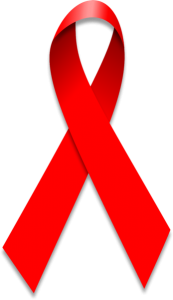(ThyBlackMan.com) Maybe if its ominous presence didn’t live in my own back yard infecting my neighbors, I would be oblivious to its existence. And maybe, just maybe, since no one in my family has been recently diagnosed with this disease, it would just go away and I’ll be asked to only write articles around World AIDS Day each year as if it were just a distant memory.
Maybe not! The rates of HIV/AIDS in Louisiana, my back yard, are astounding and disheartening. According to the latest data from the Centers of Disease Control, the state of Louisiana ranks fourth highest in number of AIDS cases. Baton Rouge, the capitol city, ranks second and New Orleans  ranks third in AIDS cases among the largest metropolitan areas in the United States.
ranks third in AIDS cases among the largest metropolitan areas in the United States.
This disease, however, is global and estimates from the UNAIDS 2009 AIDS Epidemic Update state that approximately 31.3 million adults and 2.1 million children were living with HIV at the end of 2008. In a 2009 study published in The Lancet, about half of the people who acquire HIV become infected before they turn 25 years of age. This same study reiterates how far reaching its presence has become; as world wide, AIDS is the second most common cause of death among 20-24 year olds.
The most frustrating thing about this disease is that it is preventable. Knowing your status by getting tested, practicing safe sex, being educated, and accessing care for those who are infected are of the utmost importance in slowing the spread of this illness.
The World AIDS Day theme for 2010 is “Universal Access and Human Rights“. HIV/AIDS does not discriminate as it affects men, women, and children of all races, creeds, colors, and sexual preferences. An unfortunate commentary about this disease is that once diagnosed, your options for treatment and thus your life span are also dependent upon where you live. In developing countries, the numbers are staggering. Consider that an estimated 5.6 million people were living with HIV/AIDS in South Africa in 2009, more than any other country in the world.
In 2009 alone, an estimated 310,000 South Africans died of AIDS, many of which were children. This high number of death due to AIDS occurs despite efforts to increase awareness and raise monies to provide care and medicines to those infected. The reality is that we (the human family) have fallen short and many suffer and die each day because of lack of access to care. In developing countries, the impact of death reaches beyond the sad news of loss of life, but that children are raising children with a significant loss of financial support to purchase food or medicines to sustain their lives.
When World AIDS Day was founded in December of 1988, its main purpose was to increase awareness, raise funds, educate those who knew little of the disease, and to fight the prejudices and stigma placed upon the disease. In 2010, the medical world has developed some significant changes that impact the quality of life one may experience when diagnosed with HIV/AIDS; but in countries where there is a severe lack of economic support, access to preventative measures, conflict between family values and medical best practices, HIV testing, and education the theme must be more than words, it must become action.
Action begins with each of us. I encourage those who have risk factors for HIV/AIDS to get tested. Wear your red ribbon not only on World AIDS Day, but whenever you feel the need to raise awareness. Remember that everyday there are deaths from HIV/AIDS that can be prevented by simply having a larger, louder voice in making sure that our brothers and sisters that share this world with us are getting the access and care to continue to live another day.
Written By Rani G Whitfield

















Leave a Reply